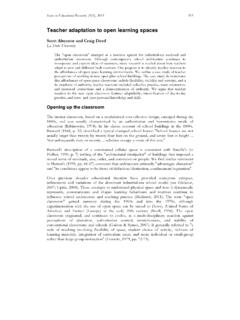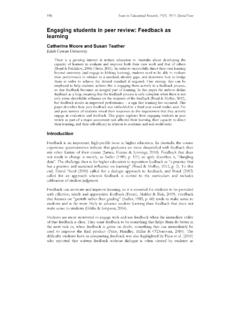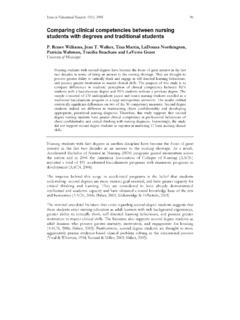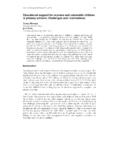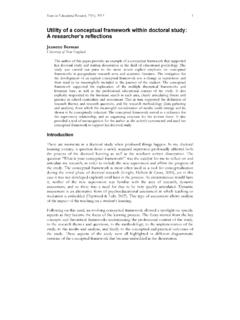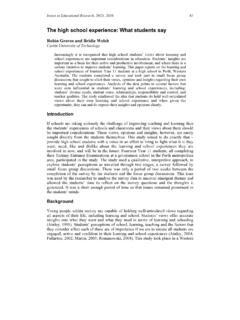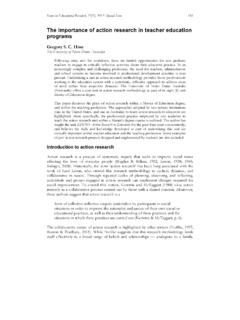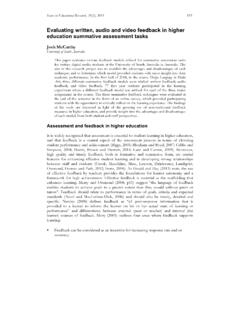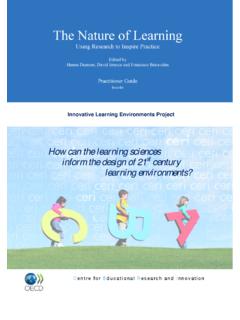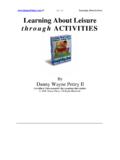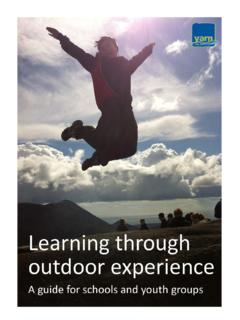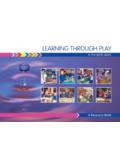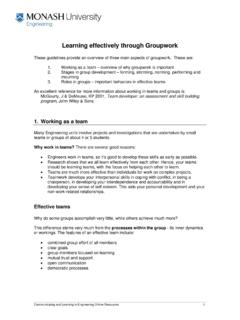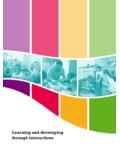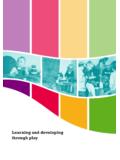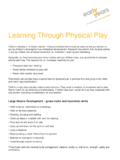Transcription of Student reflection and learning through peer …
1 Issues in Educational Research, 23(2), 2013: Special Issue 119 Student reflection and learning through peer reviews Daniel Boase-Jelinek, Jenni Parker and Jan Herrington Murdoch University This paper describes lessons learnt whilst using an online peer review system in an undergraduate unit for pre-service teachers. In this unit, students learn to use information technologies as part of their future teaching practice. The unit aims to foster graduates who become lifelong reflective educators by providing opportunities to explore and reflect on how they might use technology in authentic learning situations. Whilst peer review is an appropriate activity for supporting critical thinking and reflective practice in this kind of unit, it requires a number of decisions to be made in relation to Student preparation and support, implementation strategy, and technological infrastructure to make it work in specific contexts.
2 Much research has been conducted in recent years to inform educators in making these decisions. However, there are still gaps in the research, particularly in how to improve the quality and consistency of feedback that students give to each other in their feedback. This paper describes the experiences of implementing an online peer review system aiming to improve quality and consistency of feedback. This exploration has revealed that we can learn much about ways to improve our teaching practices by giving students an opportunity to review each other s work and give feedback. Introduction Many universities aim to produce graduates who are lifelong learners capable of assessing their own learning and monitoring their performance (Boud, Cohen & Sampson, 1999; Ross & Rolheiser, 2003).
3 peer assessment and review is an authentic, real-world approach to assessing Student learning and achievement that contributes to development of these attributes by fostering students capabilities for critical thinking and self evaluation (Ross & Rolheiser, 2003; Wood & Kurzel, 2008). peer assessment and peer review are processes whereby students grade each other s work for either summative or formative purposes (Bostock, 2006). The term peer assessment is often used to describe the process of giving summative assessment, whereas peer review is generally used for giving and receiving non-summative formative feedback (Wood & Kurzel, 2008). As noted by van den Berg, Admiraal and Pilot (2006), such reviews have benefits not only for the Student receiving the feedback, but also for the Student giving it.
4 students generally experience peer review as a non-threatening process that benefits their learning by providing suggestions from their peers about how to improve their work and by helping them understand the criteria that will be used for the summative assessment of their work (Wood & Kurzel, 2008). In this respect, there are well documented benefits from encouraging students to review each other s work (Wessa & De Rycker, 2010). The students whose work is reviewed may benefit from getting external perspectives on ways in which their work may be improved, thus stimulating their critical thinking (Sims, 1989). The students doing the review also benefit as a result of having to process and analyse the work of a peer (Wessa & De Rycker, 2010), and may get ideas for improving their own work (Sims, 1989).
5 The peer review process may extend 120 Student reflection and learning through peer reviews over a period of time, and may involve students in developing the marking criteria as well as applying those criteria to their own, and others work. students are thus encouraged to develop higher level awareness of the task through this extended engagement with the teacher in the assessment process (Wood & Kurzel, 2008). Implementation Issues For a peer review process to deliver benefits to students and educators, it needs to be set up according to a number of principles (Wessa & De Rycker, 2010). The process should have a clear purpose, and, be: Sustainable, in managing workloads for students and educators; Predictable, in managing the quality of the reviews and keeping them relevant to the purpose of the assessment; Comparable, in ensuring that the marking is fair.
6 The challenge for sustainable delivery of peer reviews for online study is to find a technology that facilitates deployment of peer reviews without increasing workloads for students and educators (Knight & Steinback, 2011). The strategy used by Knight and Steinback (2011) involved 11 steps: 1. Creating a grading rubric; 2. Entering the grading rubric into a survey generator (they used KwikSurveys); 3. Sending out an email to each Student with detailed instructions on how to fill in the survey, adding the document to be reviewed as an attachment; 4. Resolving problems where students are unable to fairly review someone s work because of personal relationships or conflict of interest; 5. Processing the data from the reviews to enable students to see reviews of their work; 6.
7 Dealing with late submissions; 7. Producing a PDF file for each Student containing their reviews; 8. Composing an email to each Student to enable them to view their feedback - checking that all identifying information is removed; 9. Assessing each Student s peer review; 10. Assigning tentative grades to each Student ; 11. Generating a final grade. The 11-step process developed by Knight and Steinback (2011) is clearly more time-consuming to perform than in-class peer reviews and would arguably be untenable for classes much larger than the 60 students that they worked with in their study. However, it is possible that using a technological solution to automate some of these processes would ameliorate much of the routine work associated with such an approach.
8 Addressing the quality and fairness of the marking process involves consideration of the process for implementing the peer reviews. Using a formative ( peer review) rather than summative ( peer assessment) approach removes most of the unfairness that might arise from peers marking each other's work (Wood & Kurzel, 2008). Making the reviews Boase-Jelinek, Parker & Herrington 121 anonymous can help avoid students feeling conflicted about commenting on the work of friends (Bostock, 2006). Preparing students for their role is also important for maintaining quality of the feedback (Pearce, Mulder & Baik, 2009), especially training them to focus on the aspects of their peer 's work that are important. The context This paper describes how a peer review process was implemented in 2012 using technology for a first-year unit in a Bachelor of Education course for prospective primary school teachers.
9 The unit had over 300 enrolled students , with about one third being external (entirely online) students . The focus of the unit was on how technology can be used by teachers to facilitate Student learning . The unit adopted an authentic learning approach that engages students in complex, real-world tasks that result in production of artifacts that represent their learning (Herrington, Reeves & Oliver, 2010). The unit started with a focus on students ' social use of technology, then moved to technology use as learners (research skills) and finally and most importantly, as teachers (pedagogical skills). In the first assignment, students were asked to plan a social event, and think about how technology might be used to enable that event and then set up an online resource to facilitate it.
10 students were given the following initial directions for the assignment and the peer review process: Think of a social situation where social networking could assist in the organisation of an event (such as a party, a family reunion, a sporting carnival, a wedding, a dinner party, a play group, a concert, a social club, etc.). Examine and learn to use one social networking site or web application (such as Twitter, Diigo, , , Skype, , iTunes, etc.) that would assist in the organisation and/or management of the event. Investigate and describe what the networking site does, then write clear instructions on how to sign up and use the site/service, and describe how a peer or partner can contribute to the social site. Share your work with a peer (your tutor will assign partners for this activity) who will follow your instructions and provide advice and feedback through peer review (you will do the same for your partner).
